A history of the microcomputer industry in 300 adverts
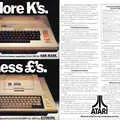
Atari
June 1983
Atari 400 and 800: More K's, Less £'s
Excepting an egregious use of "less" instead of "fewer", this advert nicely shows Atari's 400 and 800 machines, which had been launched in 1978 but didn't make it to the UK until ...
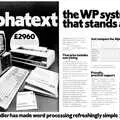
Triumph-Adler
June 1983
Alphatext: the WP system that stands alone
Here's an advert for another dedicated word-processing system, in an era where it seems that the idea that general-purpose computers could do word processing as well as other thin...
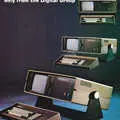
Digital Group
April 1978
Tomorrow's computer here today: The Bytemaster
The Bytemaster - or perhaps more correctly the Mini Bytemaster - was the last computer to be designed by the Digital Group, of Denver, Colorado, before the company's collapse in 1...
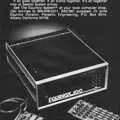
Equinox/Parasitic
October 1977
Equinox: All Together Now!
The Equinox 100 was a Zilog Z80 or Intel 8080-based system with an industry-standard S-100 bus - the most popular bus standard of the day. It was built by Parasitic Engineering ...
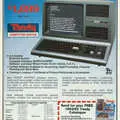
Tandy/Radio Shack
November 1982
Tandy TRS-80 Word Processing System
There was a phase for a few years where the idea of microcomputers being general-purpose machines still hadn't caught in with some sectors of the market, and so these general-purp...
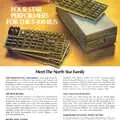
North Star
January 1978
North Star: Four star performers for the S-100 bus
A simple advert for North Star's range of S-100 boards - designed for its own Horizon micro, but compatible with any other S-100 micro running Intel's 8080 or the Zilog Z80 proces...
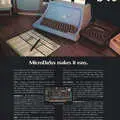
MicroDaSys
December 1978
Get it out of your system: MicroDaSys makes it easy
On the face of it, this is yet another Motorola 6800-based system with an S-100 bus, however it's perhaps the micro which more than any other most closely resembles an actual type...
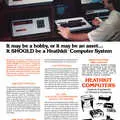
Heathkit
December 1978
It SHOULD be a Heathkit Computer System
This is another advert from The Heath Company of Benton Harbour, Michigan - and which traded as Heathkit - for a variety of its micros and peripherals of the day. It's also nice...
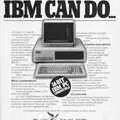
Columbia
November 1982
Columbia PC: Anything IBM can do...
This is an advert for a hugely-significant machine in the history of the microcomputer - in particular that of the modern PC, in the IBM sense. It's for Columbia Data Products' P...
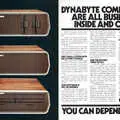
Dynabyte
December 1978
Dynabyte computers are all business inside and out
This is a nice advert for Dynabyte showing various models in its DB series of microcomputers. The middle box is the company's DB 8/1 microcomputer - a 4MHz Z80 CPU with one paral...
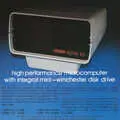
Shelton
January 1982
Shelton Sig/Net: 211 Power!
With a design that would not have looked out of place on Gerry Anderson's "Space: 1999", the Shelton sig/net 211 - designed by Chris Shelton, who had once worked for Nascom - was...
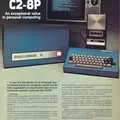
Ohio Scientific
September 1978
Ohio C2-8P: An exceptional value in personal computing
Released at about the same time as the company's much larger (and more expensive) Challenger III range, the II was aimed more at the small-business and personal end of the market ...
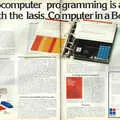
Iasis
January 1977
Microcomputer programming is a snap with the Iasis Computer in a Book
This is a real wild-card entry from Iasis Inc. of Sunnyvale in California - an actual functional computer in a book, with surrounding 250-page instructional material in the form o...
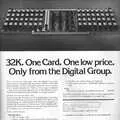
Digital Group
August 1977
32K. One card. One low price. Only from The Digital Group
The Digital Group was entirely unrelated to the other Digital - Digital Equipment Corporation, or DEC - and was founded in Denver, Colorado, in 1974. It went bust only five year...
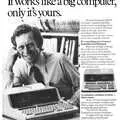
Hewlett-Packard
November 1980
HP85: It works like a big computer, only it's yours
HP's 85, launched this year, was billed as a "scientific desktop" computer. It was built around the company's own proprietary CPU, running at a surprisingly-slow 0.625MHz. However...